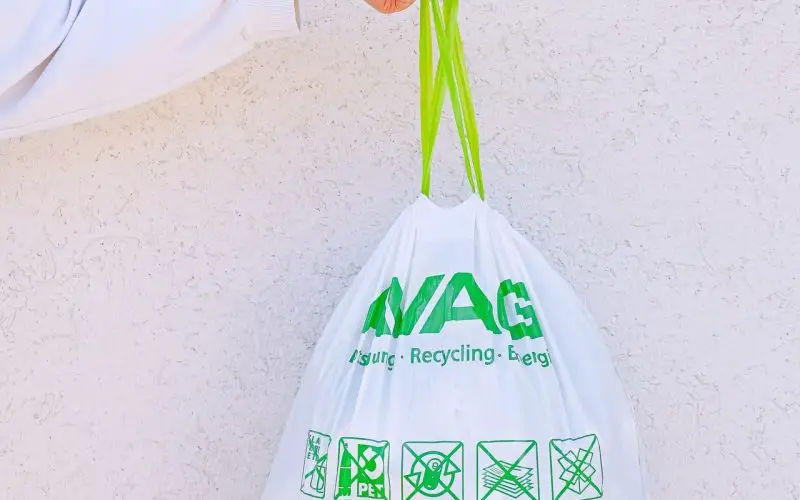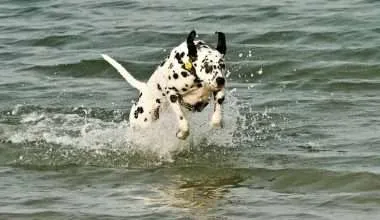Table of Contents Show
Plastic bags are a type of thin, flexible, non-woven fabric used for containing and transporting goods. Plastic bags have become an important commodity in our daily lives, as it makes it way easier to carry and transport goods from one place to another.
Whether taking groceries home, or waste from your home to the garbage disposal; it has provided us with luxury and reduced fatigue in carrying out such activities.
Different types of plastic bags that can be recycled
- Degradable
- Biodegradable
- Compostable
- Oxo-degradable
Degradable plastic bags
Degradable plastic bags break down and disintegrate over time upon being exposed to sunlight and heat. Degradable bags are problematic, as once released into the environment they break down into hundreds of tiny pieces of micro-plastics. These micro-plastics may be consumed by animals and are very troubling to remove once released into the environment.
Biodegradable plastic bags
These plastic bags are capable of undergoing biological degradation leading to the production of various by-products such as methane, carbon dioxide, water, and biomass.
Microorganism play an important role in this process, as they use these as a source of food and energy. Furthermore, exposure to the environment of biodegradable plastic bags will break them down. The property of biodegradation of plastics comes from the chemical properties of the polymer that is usually petroleum-based.
Compostable plastic bags
Compostable plastic bags are bags that are also broken down by microbes, similar to biodegradable plastic bags. But unlike them, these are used to create compost. Composting is very beneficial as it also increases the fertility of soil.
To go through the composting process, the plastic bags undergo a high level of heat, water, and oxygen. Millions of tiny microorganisms then consume this waste, converting the plastic bags into compost. For a compostable plastic bag to be considered as compostable, it must meet the US Standard ASTM D6400. The specifications require that the products are completely decomposed in a specific time frame and specific compost setting without producing any harmful residues.
Oxo-degradable plastic bags
Some people tend to confuse Oxo-degradable with biodegradable plastic bags. Oxo-degradable are not biodegradable. In fact, a conventional plastic is mixed with additives that imitate the process of biodegradation.
This makes hybrid of a traditional plastic bag with ingredients that degrade a plastic bag the same way microorganisms do. The plastics are made from polyethylene along with additives such as iron, nickel, cobalt, and manganese. They quickly fragment into smaller and smaller pieces of plastic, termed as microplastic but don’t break down at a molecular level like biodegradable or compostable plastics.
Biodegradable vs. Compostable vs. Oxo-degradable Plastic bags
| Biodegradable plastic bags | Compostable plastic bags | Oxo-degradable plastic bags |
| Can undergo biodegradation | Can undergo biodegradation | Contains additives imitating biodegradation |
| Do not compost | Do compost | Do not compost |
| Decomposed by micro- organisms | Decomposed by micro- organisms | Decomposition by additives |
| Molecular structure broken down completely | Molecular structure broken down completely | Broken down into smaller pieces (micro-plastics) |
Why do we need Eco-friendly plastic bags?
Perhaps plastic bags is a highly essential product, but it doesn’t change the fact that plastic isn’t safe for the environment. Plastic bags are a widespread cause of pollution affecting wildlife, habitats, and the environment.
They can make their way onto streets, waterways, and oceans. Every year, up to 9 million tons of plastic waste enters the oceans from coastal communities, and most of it is in the form of plastic bags. They may then end up affecting marine life. There may be more than 5 trillion micro- and macro-plastics swimming around the oceans today.
Similar to how they affect marine life, they also affect terrestrial animals who may consume plastic bags as a potential source of food. This can cause serious health issues and may even end up dying. This may also lead to habitat fragmentation, leaving these animals with no place to live, threatening their existence.
Most of the plastic made today cannot be degraded, ending up in massive landfills. Plastic bags can block public water sources and sewage systems, choking sewerage pipes which will require mass cleaning of these pipelines to maintain flow.
Importance of Plastic Bags
Plastic bags are highly functional and convenient packaging for businesses and consumers alike. From shopping to parceling, plastic bags are used around the world on a large scale.
500 billion plastic bags are used every year, most of them being used for shopping purposes.
Plastic bags were initially made in 1959 by Sten Gustaf as an alternative to paper bags which were directly being made from trees. Plastic bags are easier to pack and open, saving you crucial amount of time.
Besides, plastic bags use up lesser space than paper bags. They are also durable, less prone to tearing, and resistant to dissolution by chemical attack.
Manufacturing plastic bags is also highly energy efficient and the solid waste produced is also very minimal. A plastic bag makes consume 40% less energy and produces 70% less solid waste, in comparison to paper bags.
As this shows the incredible importance of plastic bags; they were bound to gain popularity!
With enormous negative impact of plastic bags which we’ll discuss ahead, it was absolutely necessary for us to make environment-friendly plastic bags. Various kinds of recyclable/Eco-friendly plastic bags are now available on the market.






